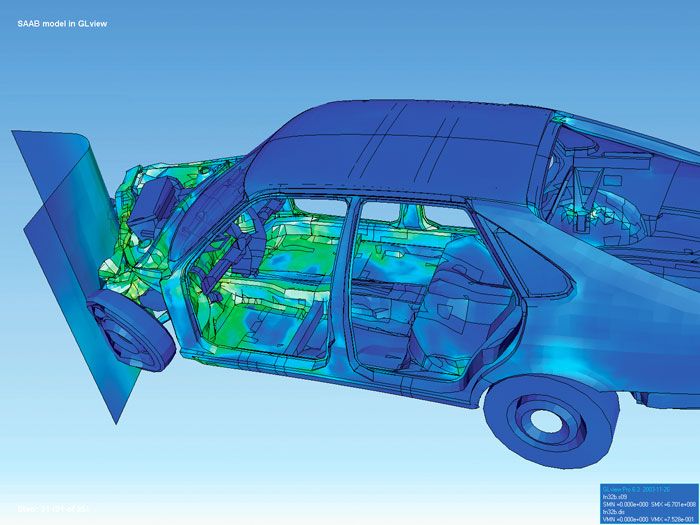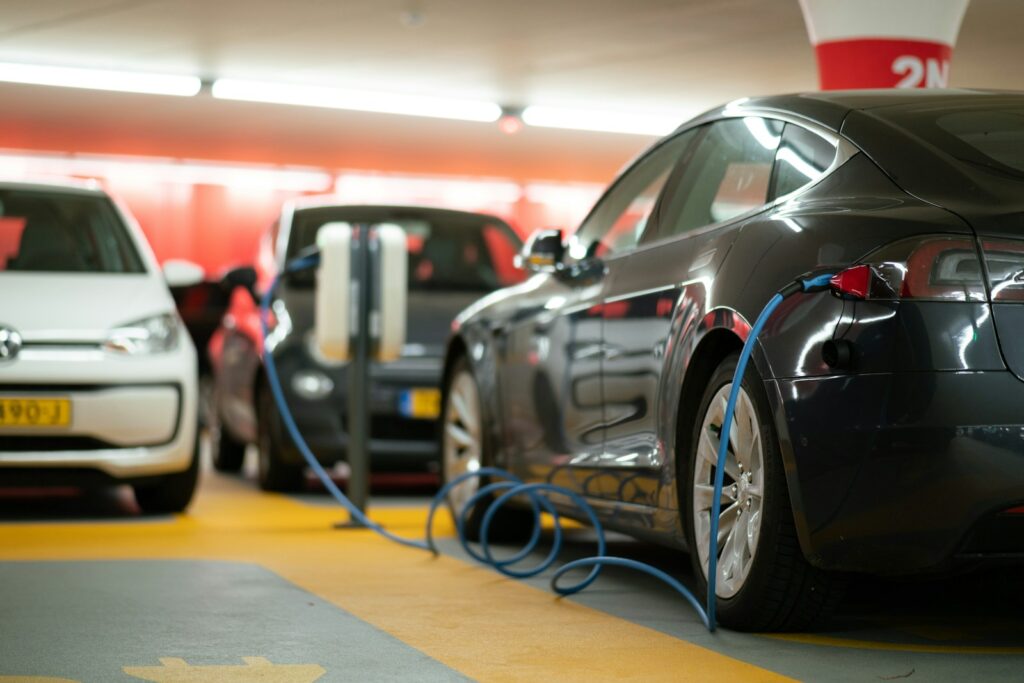
The global shift towards electric vehicles (EVs) represents one of the most significant transformations in transportation history. As concerns about climate change intensify and technological advancements make EVs more accessible, there is a palpable excitement about their potential to revolutionize how we move while drastically reducing our environmental footprint. This surge in interest, however, has also been accompanied by a parallel wave of skepticism and misinformation, often fueled by common misconceptions that can obscure the true benefits of these innovative machines.
In an era where information—and disinformation—spreads rapidly, understanding the genuine environmental impact and practical implications of electric vehicles is more critical than ever. Many narratives circulating in public discourse often present a distorted picture, suggesting that EVs are not as ‘green’ as they appear, or that the infrastructure simply isn’t ready to support their widespread adoption. These claims, while pervasive, frequently lack the robust scientific backing necessary for an informed discussion.
This article aims to cut through the noise and provide a clear, evidence-based examination of the most common myths and false assertions about electric vehicles. Drawing exclusively from authoritative scientific research and data, we will systematically fact-check these claims, offering a deeper understanding of where EVs truly stand in the pursuit of sustainable transportation and why they are indeed a crucial technology for decarbonizing road transport.

1. **Myth #1: Electric vehicles are worse for the climate than gasoline cars because of power plant emissions.**
One of the most frequently cited concerns regarding electric vehicles centers on the source of their power: electricity generation. Critics often argue that if electricity is produced from fossil fuels, EVs merely shift emissions from tailpipes to power plants, negating any environmental benefit. However, a comprehensive look at the data reveals a different story: electric vehicles typically have a smaller carbon footprint than gasoline cars, even when the emissions from electricity generation are factored in.
Electric vehicles are inherently far more efficient when it comes to energy use, converting approximately 87%–91% of the energy from the battery and regenerative braking into movement. This stands in stark contrast to gasoline vehicles, which only convert about 16–25% of the energy from gasoline into motion, averaging highway and city driving. Furthermore, EVs produce zero tailpipe emissions, which means they contribute directly to cleaner air in urban environments. While the generation of electricity for charging may create carbon pollution, the amount varies widely based on local power generation methods. Regions utilizing renewable resources like wind or solar emit no carbon during electricity generation, and even in areas reliant on fossil fuels like coal or natural gas, research consistently shows that an EV is typically responsible for lower overall levels of greenhouse gases than an average new gasoline car. As renewable energy sources continue to grow (in 2020, renewables became the second-most prevalent U.S. electricity source), the total greenhouse gas emissions associated with EVs will only decrease further.

2. **Myth #2: Electric vehicles are worse for the climate than gasoline cars because of battery manufacturing.**
Another significant point of contention concerns the manufacturing process of electric vehicle batteries. It’s often asserted that the energy-intensive production of these batteries generates so much carbon pollution that it negates the environmental advantages of an EV over its lifetime. While it is true that making a typical EV can initially create more carbon pollution than making a gasoline car due to the additional energy required for battery manufacturing, this perspective overlooks the vehicle’s entire lifecycle emissions.
Over the full lifetime of the vehicle, total greenhouse gas (GHG) emissions associated with manufacturing, charging, and driving an EV are typically lower than the total GHGs associated with a gasoline car. This is primarily because, as discussed, EVs produce zero tailpipe emissions and are responsible for significantly fewer GHGs during their operational phase. For instance, researchers at Argonne National Laboratory estimated emissions for both a gasoline car and an EV with a 300-mile electric range. Their estimates indicated that while GHG emissions from EV manufacturing and end-of-life processes are higher, the total lifecycle GHGs for the EV remained lower than for the gasoline car. Moreover, ongoing research is focused on improving the process and rate of EV battery recycling, which promises to further reduce manufacturing-related emissions by decreasing the need for new materials.
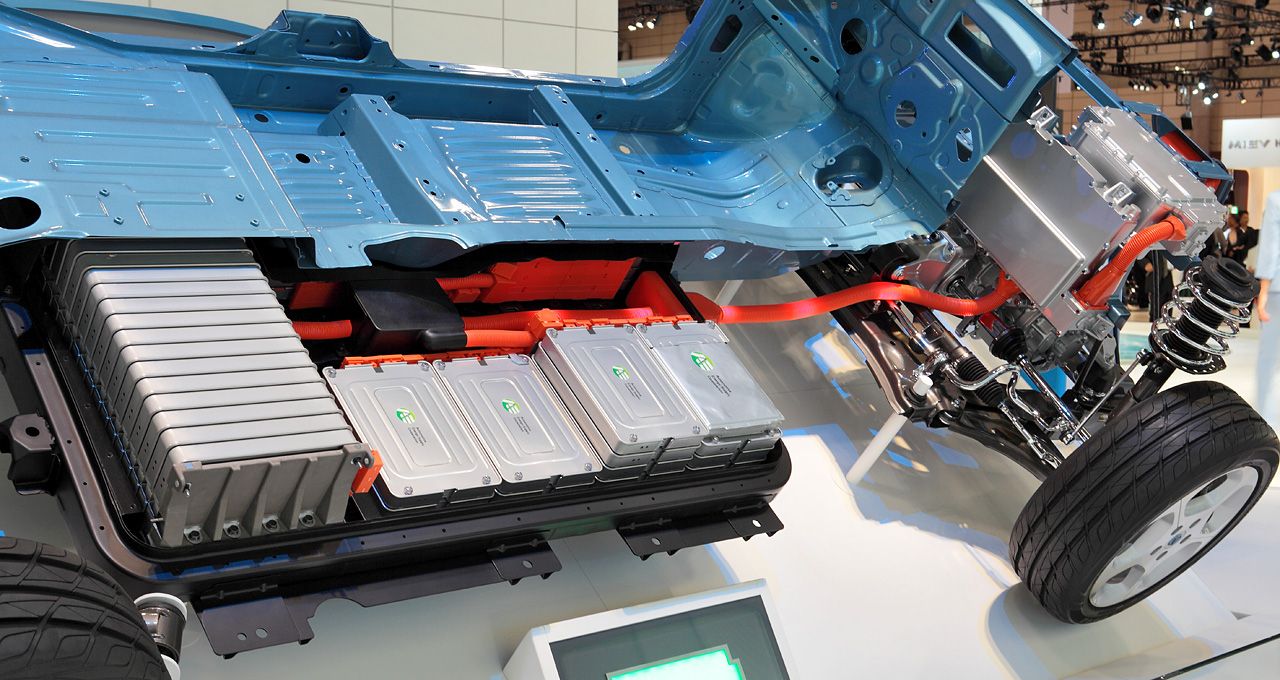
3. **Myth #3: Electric vehicle batteries are unreliable and need to be replaced every few years.**
The durability and longevity of electric vehicle batteries are often questioned, with concerns raised about their reliability and the frequency of costly replacements. This myth suggests that EV batteries have a short lifespan and are prone to failure, requiring replacements every few years, similar to starter batteries in gasoline vehicles. However, evidence overwhelmingly indicates that electric vehicle drivetrain batteries are designed for much greater endurance and exhibit remarkably low failure rates.
Electric vehicle battery replacements due to failures are uncommon, as these batteries are specifically engineered to last the lifetime of the vehicle. A recent study, which analyzed approximately 15,000 vehicles ranging from the earliest models through model year 2023, revealed that electric vehicle battery replacements due to failure have been rare, averaging only 2.5%, excluding major recalls. Furthermore, battery technologies have advanced considerably since modern EVs first entered the market around 2010. For EVs manufactured from model year 2016 onward, the failure rate has dropped to less than 0.5%. The vast majority of these infrequent replacements would typically be covered under the manufacturer’s warranty. While batteries do experience some natural degradation and loss of initial range over time, the study confirmed that 97.5% of EVs continue to use their original batteries (outside of major recalls), demonstrating a high level of reliability and durability that vastly exceeds the common misconception.
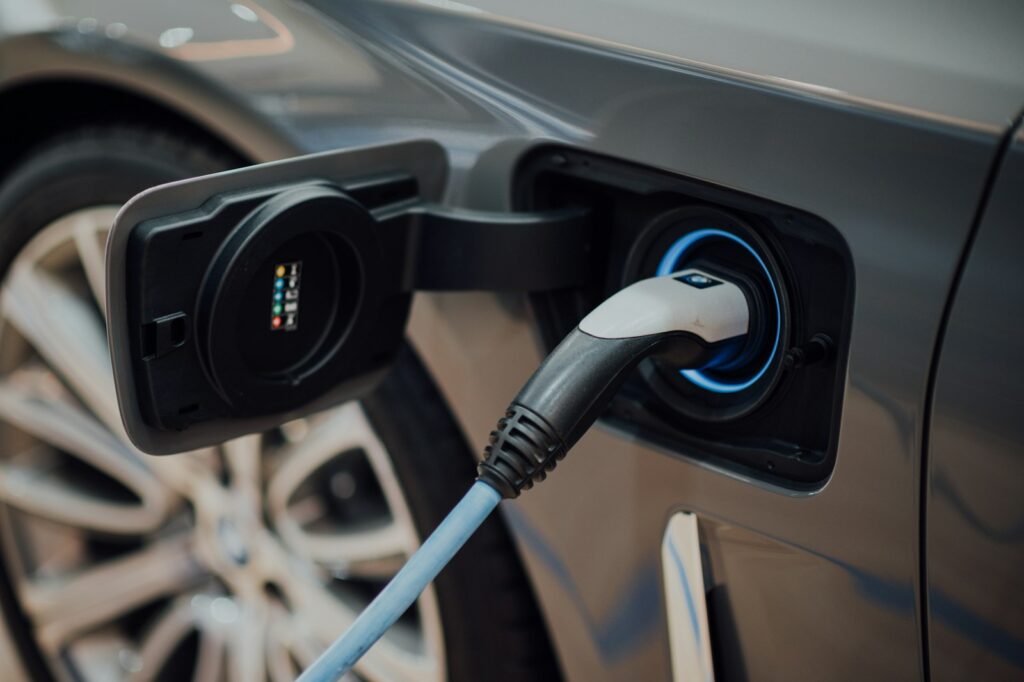
4. **Myth #4: The increase in electric vehicles entering the market will collapse the U.S. power grid.**
Concerns about the U.S. power grid’s capacity to handle a massive influx of electric vehicles are frequently voiced. The fear is that widespread EV adoption will overwhelm existing electrical infrastructure, leading to blackouts and instability. While it is true that a growing number of EVs will inevitably lead to increased electricity demand, the idea of an imminent grid collapse is largely unfounded, as electric vehicles come with inherent charging strategies that can prevent overloading the grid and, in some cases, even enhance grid reliability.
The impact on the grid is highly dependent on various factors, including the power level and time of day when vehicles are charged, and the potential for vehicle-to-grid (V2G) charging. EVs can be strategically charged during off-peak times, such as overnight, when electricity rates are often lower and demand on the grid is naturally reduced. Even with a mix of charging times, research suggests that the existing capacity will be sufficient to cover the increasing number of EVs entering the market in the coming years. Looking further ahead, as renewable energy sources become a larger component of the energy mix in many regions, switching to more daytime charging (when solar power is most abundant) combined with energy storage capabilities will allow the grid to efficiently handle increases in EV charging demand. California, which leads the country with over 1 million electric vehicles, demonstrates this resilience, where EV charging currently constitutes less than 1% of the state’s total grid load, even during peak hours. In fact, EV charging consumed less electricity than water heating and air conditioning in a typical U.S. household in 2020. The emergence of Vehicle-to-Grid (V2G) charging technology further strengthens the grid’s stability, allowing EVs to act as mobile power sources that can feed energy back into the grid when demand is high, thereby helping to balance load fluctuations. While long-term growth in electricity demand from EVs may necessitate upgrades to transmission and distribution infrastructure, proactive planning is already underway, exemplified by the Department of Energy’s Build a Better Grid Initiative, which commits over $13 billion to improve grid reliability and efficiency over the next decade.
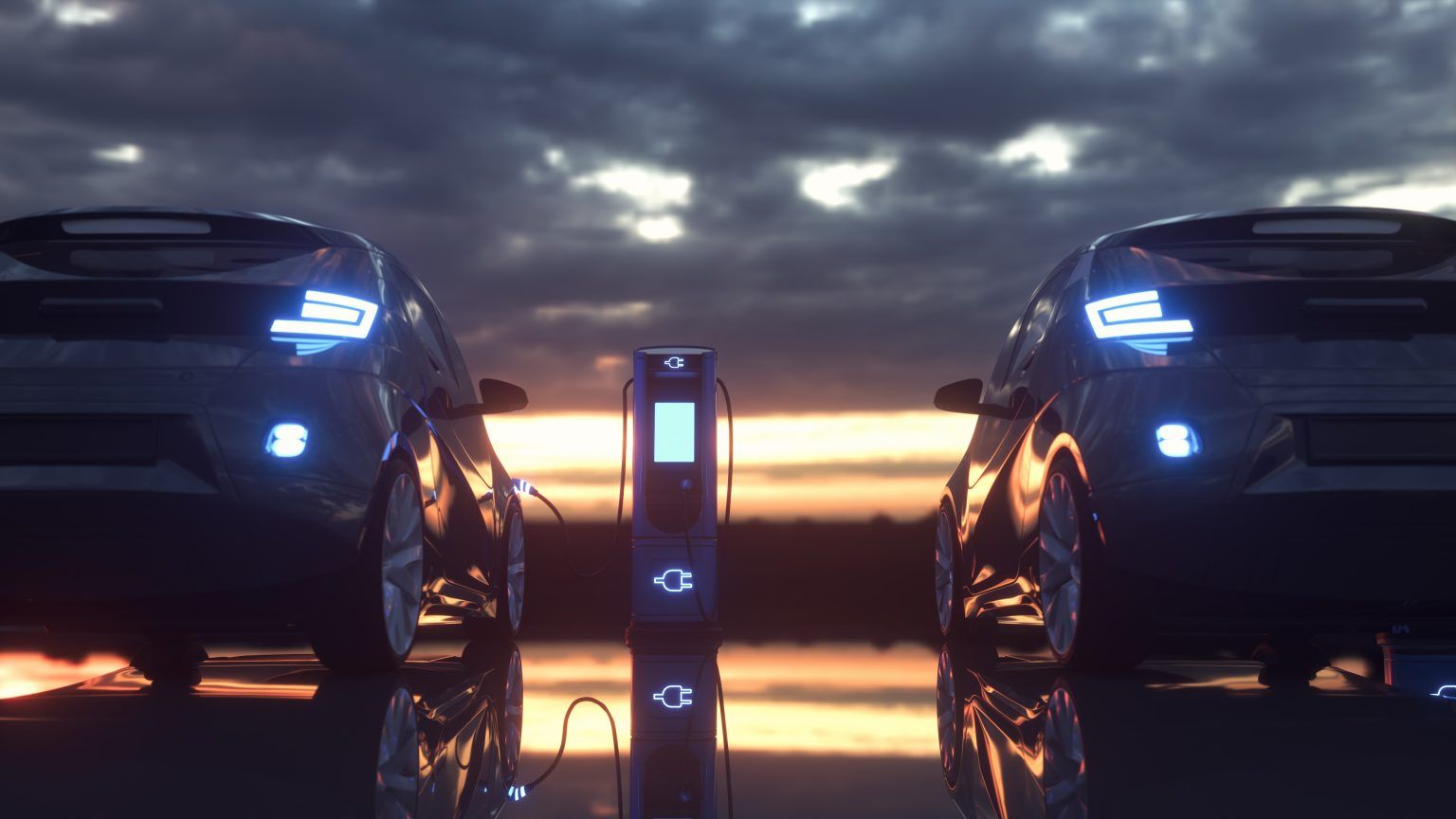
5. **Myth #5: There is nowhere to charge.**
The perceived scarcity of charging infrastructure is a common barrier for many considering the switch to an electric vehicle. The notion that drivers will be stranded with depleted batteries due to a lack of charging options is a significant deterrent. However, this myth overlooks the rapidly expanding charging network and the fundamental convenience of home charging that most EV owners experience.
For many, meeting daily driving needs simply involves plugging in at home, much like charging a smartphone. Most EVs can be charged using a standard 120 Volt (Level 1) outlet, the same type used for household appliances like toasters. For faster charging, a dedicated 240 Volt (Level 2) outlet or charging system can be installed. Beyond home charging, the public charging infrastructure in the U.S. is robust and continuously growing, with over 77,000 public stations and 219,000 EV charging ports available. Furthermore, as EV adoption accelerates, charging stations are increasingly becoming a standard amenity in apartments and condominiums, easing concerns for those without private garages. Government initiatives, such as the Infrastructure Investment and Jobs Act, are bolstering this expansion with an investment of up to $7.5 billion dedicated to building a national network of electric vehicle chargers along highways and within communities. Resources like the Joint Office of Energy and Transportation track this continuous growth, and tools like DOE’s EV Pro Lite Tool can help estimate charging needs in specific areas, illustrating a future where charging availability is no longer a significant concern.
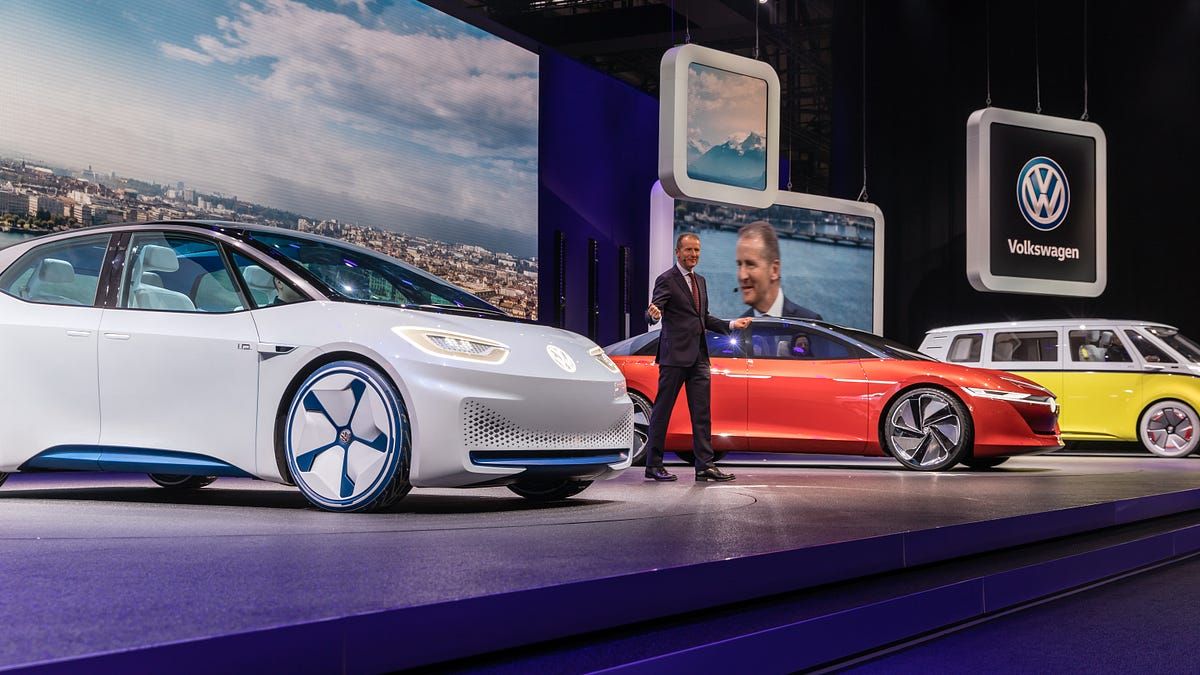
6. **Myth #6: Electric vehicles don’t have enough range to handle daily travel demands.**
A persistent concern among prospective EV buyers is ‘range anxiety’ – the fear that an electric vehicle won’t have sufficient battery range to cover typical daily driving needs or longer trips. This myth often stems from outdated perceptions of early EV models or an overestimation of the average daily driving distances for most individuals. In reality, the range of modern electric vehicles is more than adequate for typical daily use in the U.S.
Data from the 2022 National Household Travel Survey reveals that the vast majority of on-road passenger trips are relatively short: over 73% of all trips were 10 miles or less, and more than 98% were less than 75 miles. Today’s EV market offers impressive capabilities, with most models exceeding 200 miles on a fully-charged battery, and all new models are rated for more than 100 miles on a single charge. Automakers are also continually innovating, with plans announced to release even more long-range models in the coming years. While driving conditions, such as hot and cold weather, can affect an EV’s range (researchers found an average range decrease of about 40% due to cold temperatures and the use of cabin heat), these factors are typically accounted for in trip planning, and the overall available range comfortably accommodates the vast majority of daily travel requirements. Tools like the EPA’s ‘Find A Car’ provide range estimates for specific EV models, allowing consumers to assess their suitability for individual needs.
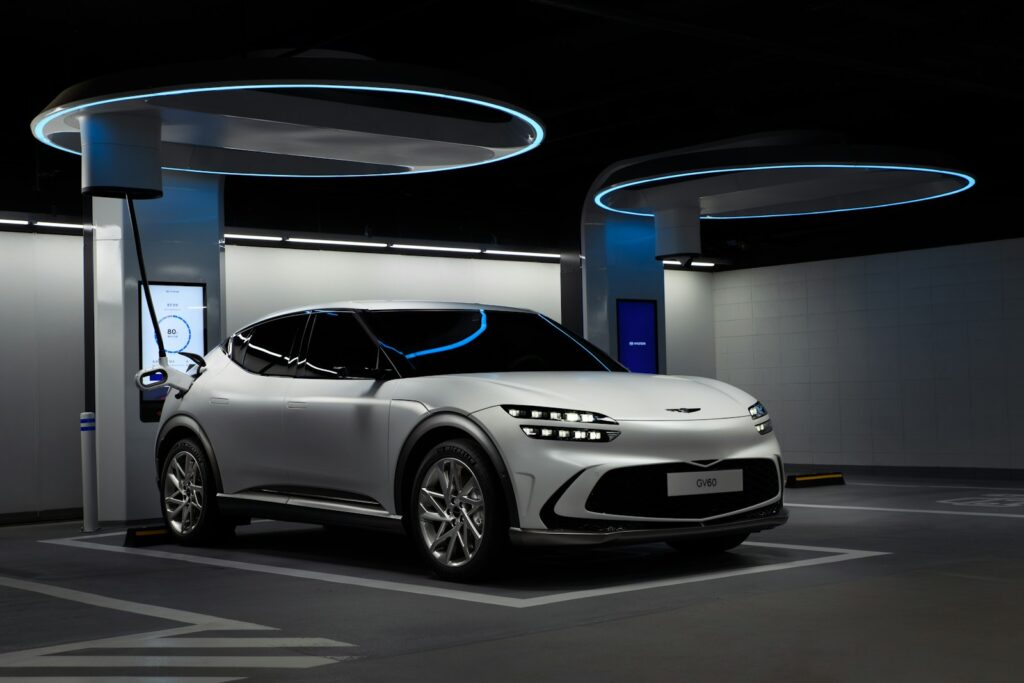
7. **Myth #7: Electric vehicles are not as safe as comparable gasoline vehicles.**
Safety is a paramount concern for any vehicle, and electric vehicles are sometimes subject to skepticism regarding their crashworthiness and overall safety compared to conventional gasoline cars. Misconceptions can arise about battery fires or structural integrity. However, it is a crucial fact that electric vehicles must meet the exact same rigorous safety standards as their conventional counterparts, ensuring they offer comparable, if not enhanced, protection to occupants.
All light-duty cars and trucks sold in the United States, regardless of their propulsion system, are mandated to meet the Federal Motor Vehicle Safety Standards. To achieve these standards, vehicles undergo an extensive and well-established testing process. This means EVs are put through the same battery of crash tests and safety assessments as gasoline vehicles. Furthermore, EV battery packs themselves are subject to their own specific testing standards to ensure their integrity and safety. Beyond meeting these foundational requirements, electric vehicles are often designed with additional safety features, such as advanced systems that automatically shut down the electrical system upon detecting a collision or a short circuit, further enhancing their protective capabilities. For more detailed information on alternative fuel vehicle safety, resources like the DOE’s Alternative Fuel Data Center provide comprehensive insights into these engineering and regulatory safeguards.

8. **Myth #8: An EV has to travel 50,000+ miles to break even with an ICE car.**
This pervasive myth suggests that the high carbon emissions associated with manufacturing an EV battery mean that electric vehicles only become environmentally beneficial after an exceptionally long operational period, often cited as over 50,000 miles. Such claims, frequently disseminated in public discourse, are often based on outdated or incomplete data and fundamentally misrepresent the lifecycle emissions of both electric and internal combustion engine (ICE) vehicles. Robust scientific analysis consistently shows that the “carbon debt” from battery production is paid off much more quickly.
For example, detailed research by the International Council on Clean Transportation (ICCT) indicates that an EV in Europe will pay off its carbon debt after approximately 11,000 miles (18,000km). This is a significantly lower figure than the 50,000+ miles often quoted. Furthermore, the lifecycle benefits of EVs are not static; they are continuously improving as electricity grids worldwide transition towards cleaner, renewable energy sources. The ICCT’s 2021 lifecycle analysis projected that an EV purchased in Europe would cut emissions by 66-69% relative to a conventional car, with this saving expected to increase to 74-77% by 2030 as the electricity mix continues to decarbonize.
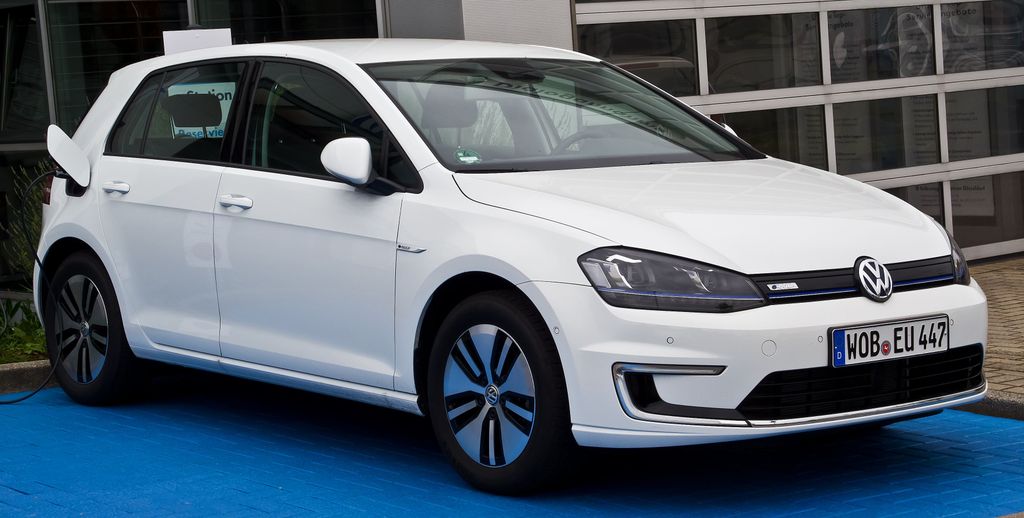
9. **Myth #9: VW’s e-Golf becomes more environmentally friendly only after 77,000 miles.**
Specific manufacturer analyses, like those once circulated by Volkswagen regarding its e-Golf model, have also been used to support the narrative of a prolonged carbon payback period for EVs. The claim that an e-Golf would only become more environmentally friendly after 77,000 miles, with its production creating up to 70% more emissions than petrol equivalents, has been widely repeated. However, these figures, despite their apparent source, have been comprehensively and repeatedly corrected by independent analyses.
The issues with VW’s original figures, which are no longer present on their website, stem from several key methodological errors. These include an overestimation of emissions associated with battery manufacturing, a failure to account for the real-world fuel economy of its diesel Golf (which is typically worse than stated test cycles), an underestimation of emissions from diesel fuel production, and an overestimation of emissions within the EU electricity mix. Correcting for these factors reveals that an e-Golf, if still in production, would pay off its carbon debt after closer to 14,000 miles, taking less than two years for an average UK driver, starkly contradicting the 77,000-mile assertion.
Car Model Information: 2018 Volkswagen e-Golf SE
Name: Volkswagen Golf
Caption: Volkswagen Golf Mk9
Manufacturer: Volkswagen
Production: 1974–present
Class: Compact car
Predecessor: Volkswagen Beetle
Successor: Volkswagen ID.3
Alt: grey car (hatchback)
Categories: 1980s cars, 1990s cars, 2000s cars, 2010s cars, All-wheel-drive vehicles
Get more information about: Volkswagen Golf
Buying a high-performing used car >>>
Brand: Volkswagen Model: e-Golf
Price: $15,741 Mileage: 35,058 mi.
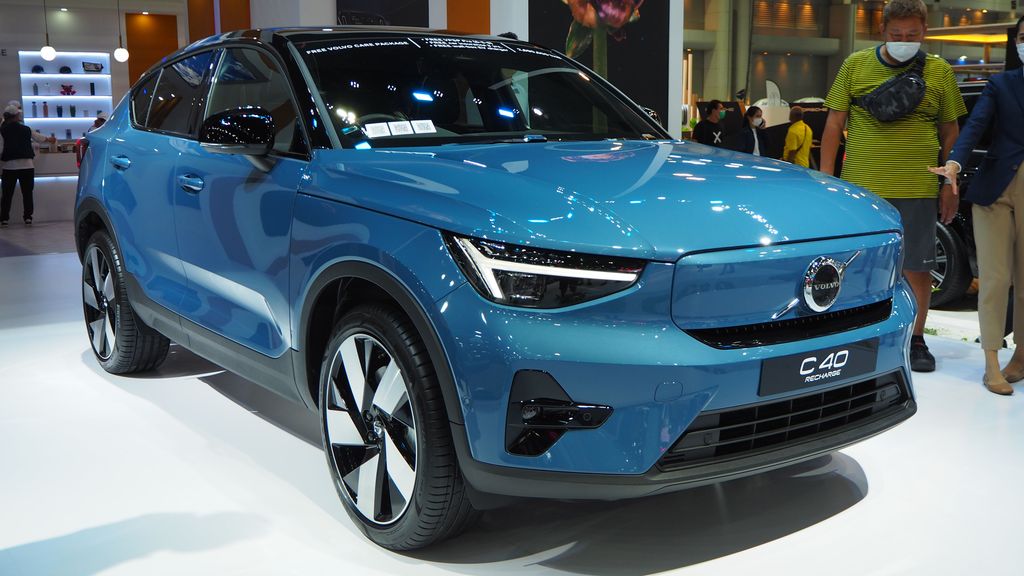
10. **Myth #10: The electric Volvo C40 needs to be driven around 68,400 miles to cut carbon.**
Similar to the claims made about the VW e-Golf, estimates regarding the Volvo C40 EV’s carbon payback period have also been frequently misused to suggest a significantly longer time for environmental benefits to accrue. A widely cited figure claimed the electric Volvo C40 would need to be driven around 68,400 miles to achieve a lower total carbon footprint than its petrol equivalent, especially if powered by the then-current global electricity mix. This figure, derived from a 2021 Volvo report, has also undergone substantial corrections and misinterpretations in media portrayals.
Expert analysis, such as that by Auke Hoekstra from Eindhoven University of Technology, has highlighted critical flaws in these initial calculations. These errors included overestimating the emissions from electricity generation, overestimating the fuel efficiency of Volvo’s petrol cars, and underestimating the emissions linked to fuel production.
Correcting these factors drastically reduces the estimated break-even point: Hoekstra’s revised estimate indicated the Volvo C40 EV would pay off its “carbon debt” relative to a petrol XC40 after approximately 16,000 miles, rather than the top-end 68,400 miles often quoted. Notably, Volvo’s own 2021 report, despite the disputed figures, acknowledged a “great reduction” in greenhouse gas emissions for the electric C40 Recharge compared to an ICE vehicle and stated its assumptions were “conservative,” anticipating rapid improvements in electricity generation carbon intensity.
Car Model Information: 2023 Volvo C40 Recharge Pure Electric Twin Ultimate
Name: Volvo XC40
Aka: ubl
Manufacturer: Volvo Cars
Production: ubl
ModelYears: ubl
Designer: Ian Kettle
Class: Subcompact luxury crossover SUV
BodyStyle: ubl
Platform: Compact Modular Architecture platform
Assembly: ubl
Related: ubl
Layout: ubl
Engine: ubl
Motor: ubl
Abbr: on (C40)
Transmission: ubl
Drivetrain: PHEV
Battery: ubl
Charging: Combined Charging System
Wheelbase: 2702 mm
Length: ubl
Width: 1863 mm
Height: ubl
Weight: convert
Categories: All-wheel-drive vehicles, Articles with short description, CS1 Dutch-language sources (nl), CS1 German-language sources (de), CS1 Portuguese-language sources (pt)
Get more information about: Volvo XC40
Buying a high-performing used car >>>
Brand: Volvo Model: C40
Price: $31,399 Mileage: 32,707 mi.
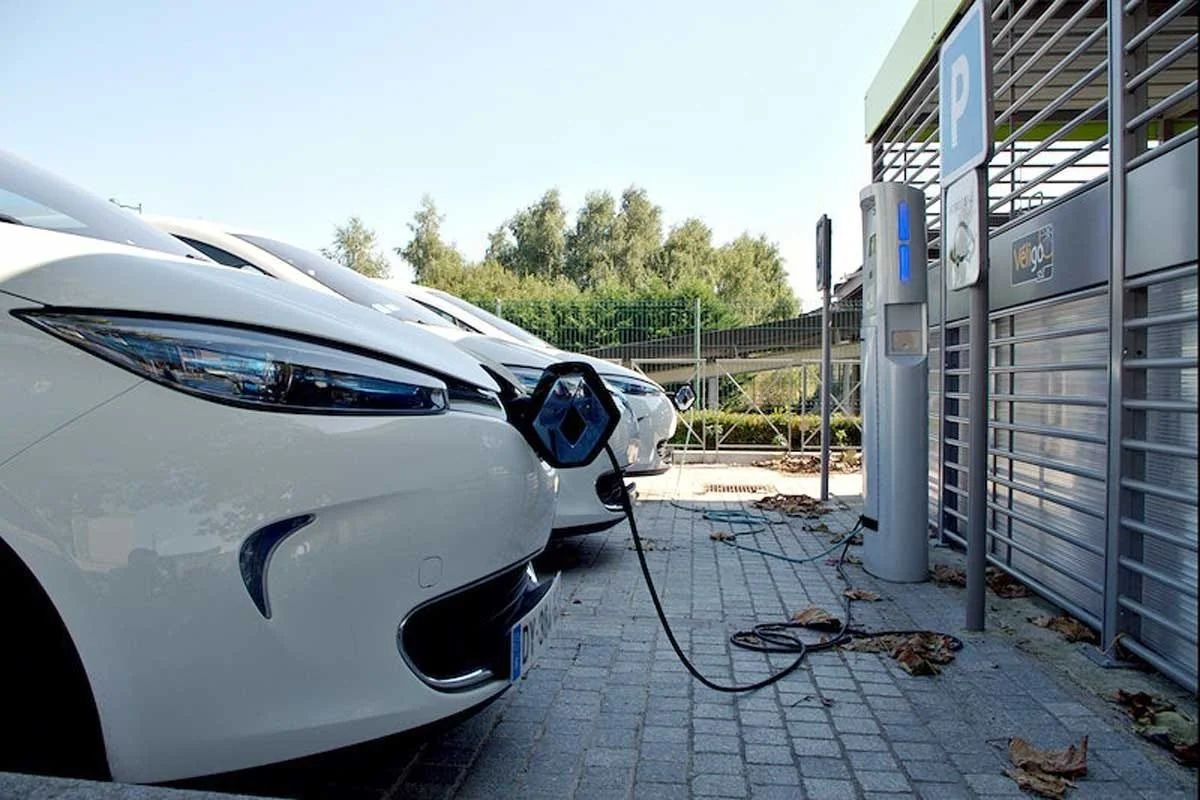
11. **Myth #11: Electric vehicles have little or no CO2 advantage over the car you already drive.**
A more sweeping claim made against EVs is that they offer negligible, if any, CO2 advantage over existing combustion-engine vehicles. This argument often aims to dissuade consumers from adopting EVs by undermining their fundamental environmental premise. Such assertions typically ignore comprehensive lifecycle assessments that account for all emissions, from manufacturing through operation, and instead focus selectively on certain aspects to construct a misleading narrative.
However, scientific analysis definitively demonstrates that EVs significantly reduce lifecycle emissions compared to conventional cars. In Europe, for instance, EVs cut lifecycle emissions by approximately two-thirds, a figure projected to increase further as electricity grids continue their decarbonization journey. As an illustrative example, a new electric Tesla Model Y would emit 14 tonnes of CO2 over a 14-year lifespan (the UK-average age at scrappage), compared to 45 tonnes of CO2 for an average petrol car, representing a substantial saving of 68%. This clearly refutes the claim of “little or no CO2 advantage,” underscoring the substantial environmental benefits of switching to an EV.

12. **Myth #12: Climate change is accelerating because of the ban on combustion engines.**
This highly speculative and counterintuitive claim suggests that policies promoting electric vehicles, such as bans on combustion-engine sales, are paradoxically accelerating climate change. This argument often posits that reducing oil demand in one country merely displaces emissions elsewhere or that the overall impact is negative. Such assertions fundamentally contradict the scientific consensus on climate change mitigation and the well-documented positive impact of EV adoption.
In stark contrast to this myth, authoritative bodies like the International Energy Agency (IEA) have provided clear evidence that EVs are actively contributing to emission reductions. The IEA reported that in 2022, alongside renewable energy sources, EVs prevented some 600 million tonnes of CO2 emissions. Their analysis further indicated that the rise in global CO2 emissions in 2022 would have been significantly larger, tripling to nearly 1 billion tonnes, without the major deployments of renewables and EVs.
The IEA projects that by the end of the decade, EV sales will be on track to displace 5 million barrels of oil demand per day and cut annual global emissions by 700 million tonnes of CO2, which is roughly equivalent to Germany’s or Saudi Arabia’s current yearly output. These figures unequivocally debunk the idea that EV policies are accelerating climate change.

13. **Myth #13: Old bangers are the green motorist’s choice.**
An intriguing, yet ultimately misleading, argument suggests that retaining older, less fuel-efficient combustion-engine cars is more environmentally sound than purchasing a new EV. This perspective often highlights the carbon emissions associated with the manufacturing of a new vehicle, implying that avoiding this production footprint by extending the life of an existing car is the “greener” option. While avoiding premature scrapping can have financial sense, from a climate perspective, this argument often overlooks the ongoing operational emissions of older vehicles.
Despite the initial carbon “bump” from manufacturing a new electric car and its battery, extensive analysis reveals that replacing an “old banger” with an EV still yields a net climate benefit. Carbon Brief analysis indicates that a new EV would begin cutting emissions after approximately 20,000-32,000 miles in the UK (32,000-50,000km). This means an average UK driver replacing an older vehicle would effectively pay off the carbon debt from buying a new EV within about four years, with the exact timeline dependent on the scrapped car’s fuel efficiency, annual mileage, and the new EV’s battery size.
Therefore, while keeping an old car might seem appealing for certain reasons, it is not the “green motorist’s choice” when considering total lifecycle emissions.

14. **Myth #14: EVs simply displace carbon emissions from roads to distant power stations. **
This recurring critique of electric vehicles argues that they do not truly reduce carbon emissions but merely shift them from vehicle tailpipes to stationary power plants, especially in regions heavily reliant on fossil fuels for electricity generation. This argument is frequently used to suggest that EVs offer little or no real environmental benefit, implying a zero-sum game where emissions are simply relocated rather than eliminated. However, this assertion fundamentally disregards the significant efficiency advantages of EVs and the ongoing decarbonization of electricity grids globally.
Even when electricity is primarily generated from fossil fuels like coal or gas, electric vehicles still significantly cut carbon emissions. This is primarily because EVs are remarkably more energy-efficient than combustion-engine cars, being roughly four times more efficient. For example, Carbon Brief analysis shows that even in coal-heavy Poland, an EV would cut lifecycle emissions by two-fifths. This reduction rises to two-thirds in the UK and four-fifths in Norway, demonstrating substantial benefits even with varying grid mixes.
The Intergovernmental Panel on Climate Change (IPCC) explicitly states that EVs reduce emissions in almost all cases, even with current grids, and highlights that investments in EVs are “convertible” into low-carbon assets as electricity production switches to renewables. This long-term perspective is crucial for understanding their true impact.

15. **Myth #15: Electric cars are not green machines.**
While it is tempting to dismiss all criticisms of EVs as entirely false, the claim that “electric cars are NOT green machines” falls into a “mostly false” category, acknowledging a non-trivial carbon footprint associated with their production and use, while strongly affirming their overwhelmingly greener profile compared to ICE vehicles. This nuanced perspective recognizes that while EVs are central to decarbonization, there is always room for improvement in their manufacturing and supply chains.
Indeed, an EV bought in the UK today can cut emissions by two-thirds relative to a combustion-engine car, unequivocally positioning it as the “greener” choice. However, it is also true that EVs still carry a lifecycle carbon footprint, estimated between 20 and 30 tonnes of CO2, depending on factors like mileage, location, and battery size. This footprint stems from mining, battery manufacturing, and the production of components like steel and aluminum.
The IPCC, while confirming that EVs running on low-carbon electricity offer the largest decarbonization potential for transport, emphasizes that “further efforts to reduce the GHG footprint of battery production…are essential for maximizing the mitigation potential of BEVs.” This balanced view encourages continuous innovation and improvement in the EV ecosystem, aiming for even lower emissions in the future.
After meticulously dissecting these pervasive myths, it becomes evident that the narrative surrounding electric vehicles is often clouded by misinformation and selective data presentation. The journey towards a decarbonized future is complex, yet the scientific evidence consistently underscores the transformative potential of EVs. By equipping ourselves with accurate information, we can move beyond unwarranted skepticism and embrace the genuine promise of electric transportation as a cornerstone of sustainable progress.

